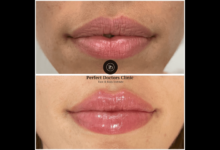
Alcohol Testing Programs
Introduction
As a society, we are becoming increasingly aware of the dangers of alcohol and drug abuse, especially in the workplace. Alcohol testing programs play a crucial role in promoting a safe and healthy working environment for employees. In this article, we will delve into the various types of alcohol testing programs, their advantages and disadvantages, and the different methods used to conduct alcohol testing. Additionally, we will discuss the future of alcohol testing programs and how they will continue to evolve to meet the changing needs of our workplaces.
ntatesting.com a leading provider of alcohol testing services and committed to helping companies implement effective alcohol testing programs that promote safety and productivity.
Types of Alcohol Testing Programs
There are several types of alcohol testing programs that companies can choose to implement, including pre-employment testing, random testing, post-accident testing, and reasonable suspicion testing. Let’s explore each of these programs in more detail.
Pre-Employment Testing
Pre-employment testing conducted as part of the hiring process and used to screen potential employees for alcohol and drug use. This type of testing typically performed after an offer of employment has been made and contingent upon passing the test.
Random Testing
Random testing is a proactive approach to alcohol testing that aims to deter employees from engaging in alcohol and drug use. Random testing conducted on an unannounced basis and can be performed on any employee at any time.
Post-Accident Testing
Post-accident testing is performed after a workplace accident has occurred, and alcohol or drug use may have been a contributing factor. This type of testing is conducted to determine if an employee was under the influence of alcohol or drugs at the time of the accident.
Reasonable Suspicion Testing
Reasonable suspicion testin performed when an employer has a reasonable belief that an employee under the influence of alcohol or drugs. This type of testing typically conducted when an employee exhibits signs of alcohol or drug use, such as impaired speech, coordination, or behavior.
Advantages of Alcohol Testing Programs
Alcohol testing programs offer several benefits to companies, including improved safety in the workplace, reduced absenteeism and increased productivity, compliance with federal regulations, and a deterrent effect on alcohol abuse. Let’s examine each of these benefits in more detail.
Improved Safety in the Workplace
The primary advantage of alcohol testing programs improved safety in the workplace. By deterring employees from engaging in alcohol and drug use, companies can reduce the risk of accidents and injuries. Alcohol and drug abuse can impair an employee’s judgment, reaction time, and coordination, making them a danger to themselves and their colleagues.
Reduced Absenteeism and Increased Productivity
Alcohol and drug abuse can also lead to increased absenteeism, tardiness, and decreased productivity. Alcohol testing programs can help to reduce these issues by deterring employees from engaging in alcohol and drug use and by providing support for employees who may struggle with addiction.
Compliance with Federal Regulations
Alcohol testing programs can also help companies comply with federal regulations, such as the Department of Transportation (DOT) regulations for transportation employees. These regulations require alcohol testing for certain employees and impose penalties for non-compliance.
Deterrent Effect on Alcohol Abuse
Alcohol testing programs can also serve as a deterrent to alcohol and drug abuse by making employees aware that they may be tested at any time. This can help to reduce the prevalence of alcohol and drug use in the workplace and create a safer and healthier work environment.
Disadvantages of Alcohol Testing Programs
While alcohol testing programs offer many benefits, there are also some disadvantages to consider, including privacy concerns, the potential for false positive results, the cost of implementation and maintenance, and resistance from employees and labor unions. Let’s examine each of these disadvantages in more detail.
Privacy Concerns
One of the main disadvantages of alcohol testing programs is the potential invasion of privacy. Employees may feel that their personal lives are being scrutinized and that their privacy rights are being violated. Companies must take care to implement alcohol testing programs in a manner that respects employees’ privacy rights and complies with applicable laws and regulations.
Potential for False Positive Results
Another disadvantage of alcohol testing programs is the potential for false positive results. Alcohol testing methods are not perfect and there is a risk that a test result may indicate that an employee is under the influence of alcohol or drugs when they are not. This can result in disciplinary action being taken against an innocent employee and can also damage the company’s reputation.
Cost of Implementation and Maintenance
The cost of implementing and maintaining an alcohol testing program can also be a disadvantage. Companies must invest in testing equipment and supplies, as well as training employees to administer the tests. Additionally, companies must ensure that their alcohol testing programs comply with applicable laws and regulations, which can also add to the cost.
Resistance from Employees and Labor Unions
Finally, alcohol testing programs may be met with resistance from employees and labor unions. Employees may view alcohol testing as an invasion of privacy and a violation of their rights, and labor unions may argue that alcohol testing is a form of discrimination. Companies must work to address these concerns and ensure that their alcohol testing programs are implemented in a manner that fair and respectful of employees’ rights.
Methods of Alcohol Testing
There are several methods used to conduct alcohol testing, including breath alcohol testing, urine alcohol testing, blood alcohol testing, and saliva alcohol testing. Let’s examine each of these methods in more detail.
Breath Alcohol Testing
Breath alcohol testing is the most common method of alcohol testing and involves measuring the amount of alcohol in an individual’s breath. This method is quick, non-invasive, and relatively inexpensive, making it a popular choice for many companies.
Urine Alcohol Testing
Urine alcohol testing involves analyzing a sample of an individual’s urine to detect the presence of alcohol. This method less commonly used than breath alcohol testing but is still a reliable and accurate method of alcohol testing.
Blood Alcohol Testing
Blood alcohol testing involves analyzing a sample of an individual’s blood to detect the presence of alcohol. This method is the most accurate but is also the most invasive and expensive. Blood alcohol testing typically used in cases where there a high level of suspicion of alcohol or drug use.
Saliva Alcohol Testing
Saliva alcohol testing involves analyzing a sample of an individual’s saliva to detect the presence of alcohol. This method is non-invasive and relatively inexpensive but less commonly used than breath and urine alcohol testing.
The Future of Alcohol Testing Programs
As technology continues to advance, alcohol testing programs will continue to evolve to meet the changing needs of our workplaces. Here are a few trends we can expect to see in the future of alcohol testing programs.
Advancements in Testing Technology
New and improved methods of alcohol testing are being developed all the time. Advances in technology will make alcohol testing faster, more accurate, and less invasive, making it easier for companies to implement effective alcohol testing programs.
Expansion of Testing Programs in Different Industries
Alcohol testing programs will become increasingly common in a wider range of industries, as companies recognize the benefits of promoting a safe and healthy workplace. This trend is particularly true in industries that have a high risk of accidents and injuries, such as transportation and construction.
C. Increased Focus on Employee Wellness and Support
Alcohol testing programs are increasingly being viewed not just as a means of promoting safety in the workplace, but also as a tool for promoting employee wellness and support. Companies that implement alcohol testing programs can provide support to employees who struggle with alcohol addiction and help them get the treatment they need. By addressing alcohol abuse in the workplace, companies can help improve employee morale, increase productivity, and reduce the risk of accidents and injuries.
D. Legal and Ethical Considerations
When implementing an alcohol testing program, companies must be aware of the legal and ethical considerations involved. For example, employers must be careful to avoid discrimination and ensure that alcohol testing conducted in a way that respects employee privacy. Companies must also be aware of the laws and regulations that govern alcohol testing and make sure their programs are compliant with these requirements.
VII. Conclusion
A. Summary of Key Points
- Alcohol testing programs are becoming increasingly common as companies seek to promote safety and health in the workplace.
- These programs have advantages, such as reducing the risk of accidents and injuries and promoting employee wellness, but also disadvantages, such as privacy concerns and the potential for false positive results.
- Companies can implement effective alcohol testing programs with the help of organizations like NTAtesting.com, which provides a range of testing services, training, and resources.
- When implementing an alcohol testing program, companies must be aware of legal and ethical considerations and ensure that their programs are compliant with applicable laws and regulations.
B. Final Thoughts on the Importance of Alcohol Testing Programs
In conclusion, alcohol testing programs play a critical role in promoting a safe, healthy, and productive workplace. By addressing alcohol abuse and providing support to employees who struggle with addiction, companies can help improve employee morale, increase productivity, and reduce the risk of accidents and injuries. With the help of organizations like NTAtesting.com, companies can implement effective alcohol testing programs that benefit both employees and the business as a whole.
Thanks for Reading







